Top 5 Interesting Facts about Millard Fillmore
After Zachary Taylor's untimely passing, Millard Fillmore (1800–1874) was elected as the thirteenth President of the United States. He backed the contentious ... read more...Fugitive Slave Act that was part of the Compromise of 1850, and in 1856 he unsuccessfully ran for president. Are you curious about this man? Let's follow Toplist to discover some interesting facts about Millard Fillmore.
-
On January 7, 1800, in what is now Moravia, Cayuga County, in the Finger Lakes region of New York, Millard Fillmore was born in a log cabin on a farm. He was the second of eight children and the eldest son of Phoebe Millard and Nathaniel Fillmore.
Born in a log home, Fillmore spent a large portion of his youth working the 130-acre farm his father leased in the Finger Lakes region of New York, clearing ground and cultivating crops. One of the interesting facts about Millard Fillmore is his youth was one of hard labor, extreme poverty, and essentially little formal training.
He persuaded Millard, his oldest son, who was 14 at the time, not to enlist in the War of 1812 and apprenticed him to Sparta clothier Benjamin Hungerford in the hopes that Millard would acquire a craft. As a result of Fillmore being forced into menial work and his dissatisfaction at not developing any talents, Hungerford fired him. Then, in a mill in New Hope, his father employed him in the same line of work. Millard purchased a part in a lending library and read all the literature he could in an effort to better himself. He enrolled in a new academy in the town in 1819 while the mill was closed when he met Abigail Powers and fell in love with her.
He put a lot of effort into his education despite obtaining little formal education, and eventually became a teacher. Instigated by the local judge who was his father's landlord, he developed an interest in the law as well. At the age of 23, after completing a few clerkships, Fillmore was admitted to the bar and founded a practice close to Buffalo, New York. There, he made a decent fortune and started to network with the local political elite.
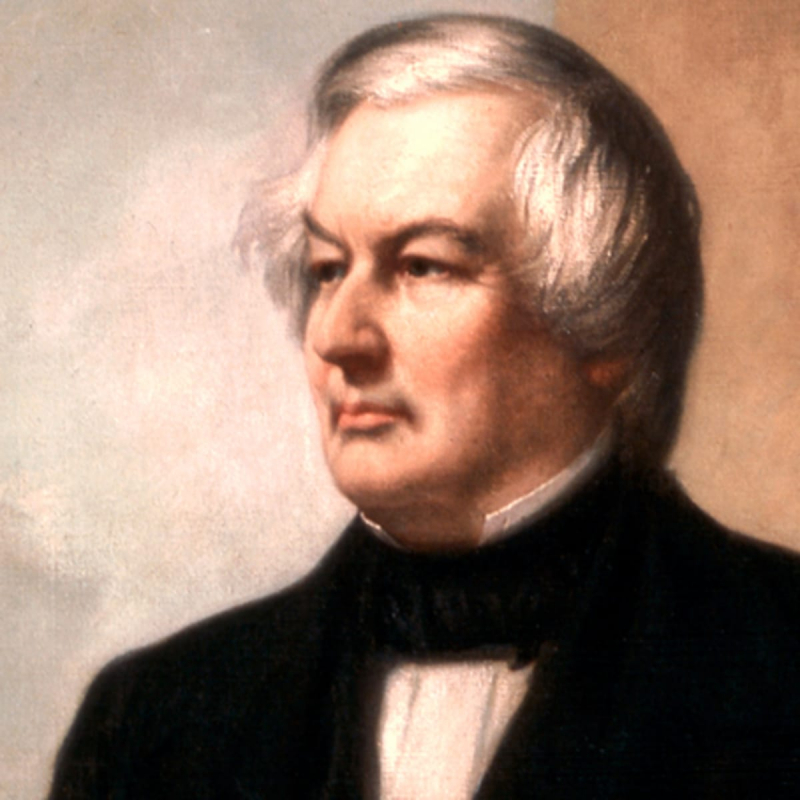
Photo: history 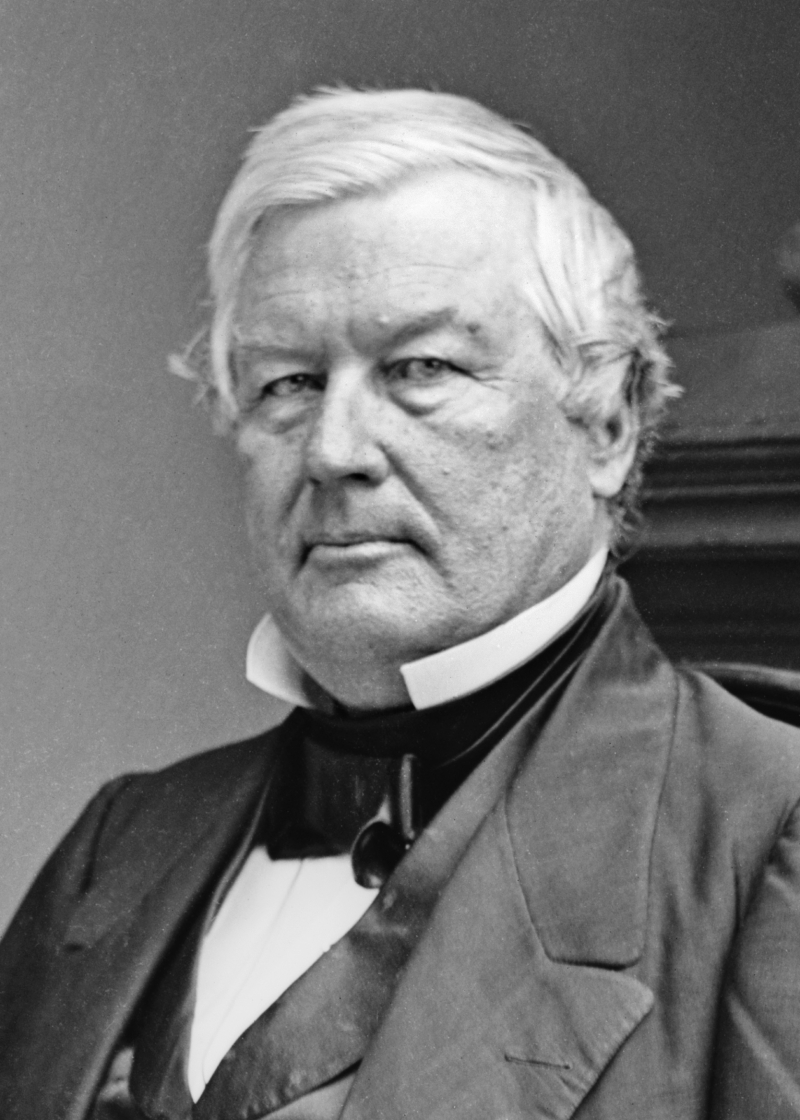
Photo: commons.wikimedia.org -
Taylor and Fillmore were elected president with 47% of the popular vote because the Democrats were divided over the subject of slavery; some had defected to create the Free Soil Party, which was opposed to slavery. The Taylor administration essentially ignored Fillmore while he served as vice president, consulting Weed and Seward even when deciding who would receive favors in New York. Taylor, however, caught a stomach ailment on July 4, 1850, after going to a Fourth of July party at the Washington Monument. His doctors administered the now-discredited medical procedures of the time, including the mercury chemical calomel, which caused bleeding and blisters in him. Taylor passed away a few days later. The abrupt passing of Taylor, known as “Old Rough and Ready,” shocked the country since he had built up a reputation for toughness through his military campaigns in the heat.
On July 8, Fillmore was summoned from his position as Senate president and sat in a vigil outside Taylor's bedroom in the White House with other members of the cabinet. On the evening of July 9, at his apartment at the Willard Hotel, he received the official notice of the president's passing, signed by the cabinet. Following a restless night, Fillmore acknowledged the letter and went to the House of Representatives, where he took the oath of office from William Cranch, the head judge of the federal court for the District of Columbia, who had also sworn in President Tyler, during a joint session of Congress. So, he was one of five accidental president. Chester A. Arthur (1881–1855), John Tyler (1841–1845), Andrew Johnson (1865–1869), and Gerald Ford were the only other American presidents who were never elected to the position (1974-1977).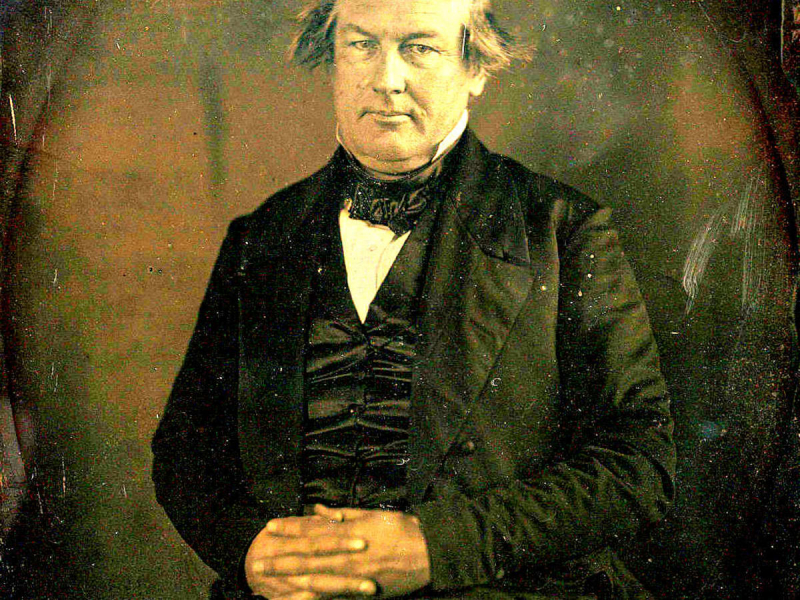
Photo: history 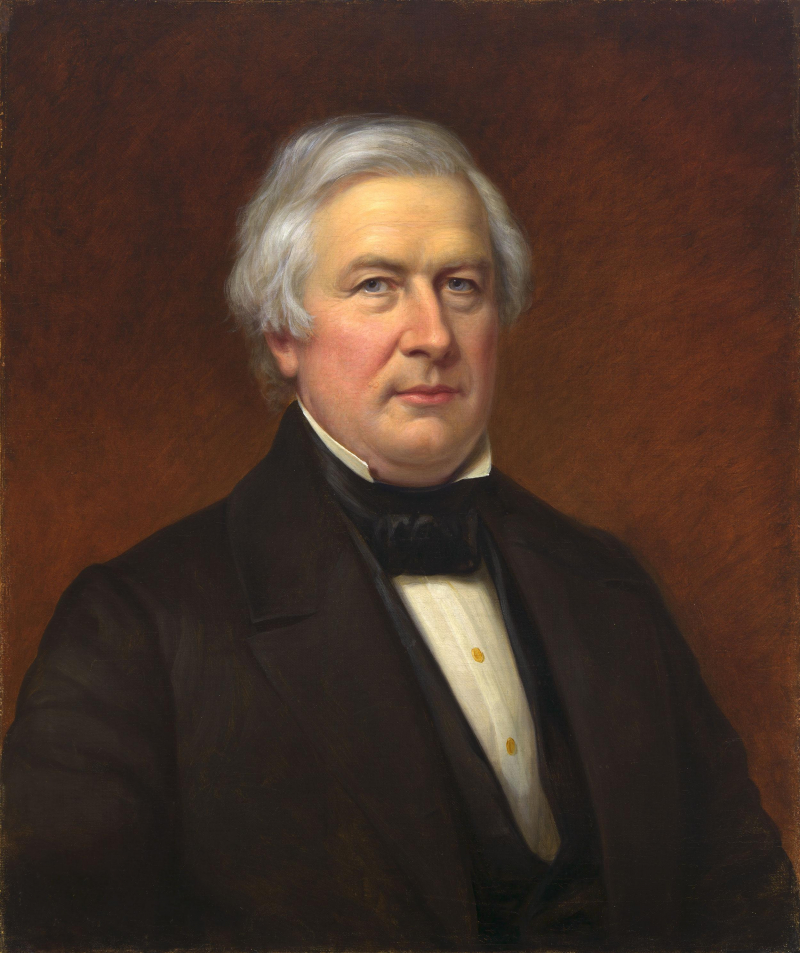
Photo: commons.wikimedia.org -
The Compromise of 1850 is among Millard Fillmore's most well-known accomplishments. The Compromise of 1850 was created when a good deal of legislation were signed into law. The North and South each adopted different laws when they were passed. This, however, only served to short-term keep the peace.
There were five different bills that made up the Compromise of 1850. A new, more stringent Fugitive Slave Law was established by the first of these acts. The new rule mandated that federal agents assist in bringing escaped slaves back to their owners in all states, including those where slavery was outlawed. The slave trade in D.C. was abolished by the second statute. The public trading areas near the Executive Mansion (the White House) and Congress were closed off, which humiliated many Northerners, even though slavery was still allowed in the district. California was next admitted to the Union as a free state by Congress. Finally, the territories of New Mexico and Utah were constituted legally and granted popular power over the question of slavery. Finally, Texas's borders were altered and its debts were assumed by the federal government of the United States.
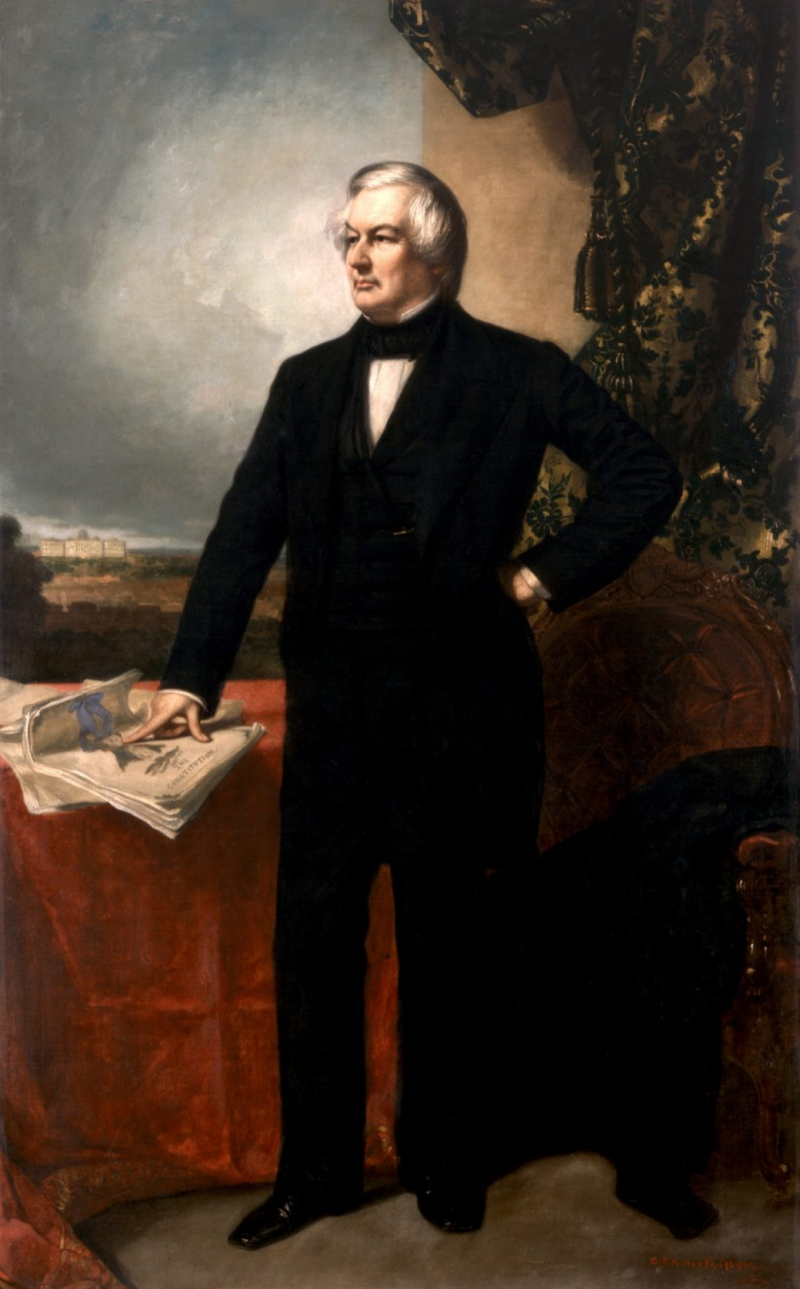
Photo: whitehousehistory 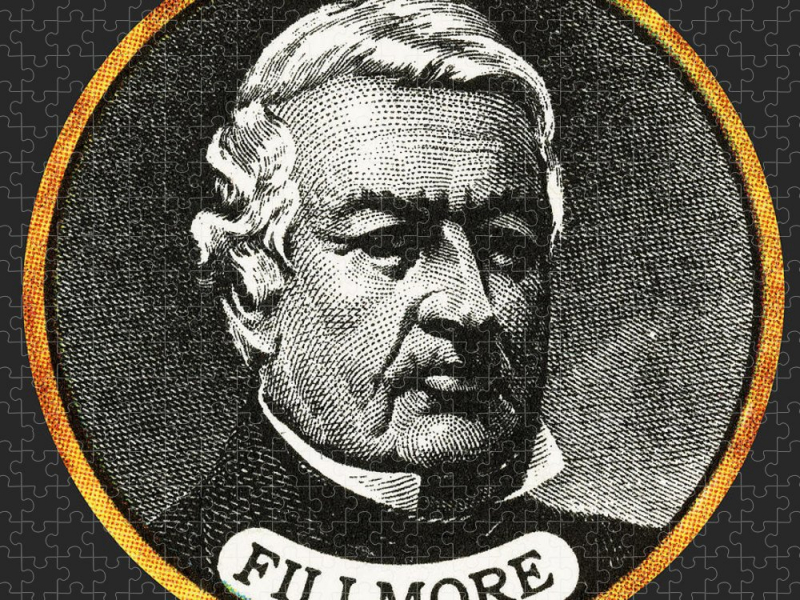
Photo: pxpuzzles -
According to legend, Fillmore's father only had three books: a Bible, a hymnal, and an atlas. However, Fillmore developed a passion for reading and started always having a dictionary on him to expand his vocabulary.
One of the interesting facts about Millard Fillmore is the first permanent library in the White House was established by Millard Fillmore and his wife Abigail, who served as the 13th President of the United States (1850–53), a little-known fact. Many of their forerunners carried their personal libraries to the White House, but they quickly took them down when their time there was up.
On December 24, 1851, an unintentional fire in the Library's rooms (which were then located in the U.S. Capitol) burned two-thirds of the library's 55,000 volumes, including 6,487 volumes belonging to Thomas Jefferson. In response to the fire, President Fillmore and a number of members of Congress “gave all the service in their power.” Congress passed an appropriations measure a few weeks later, on Jan. 13, 1852, to pay for the replacement of all the books destroyed in the fire. This measure, which President Fillmore signed into law, guaranteed the Library of Congress' immediate future and was a show of trust in governmental backing for an institution that was at the time facing severe financial difficulties.
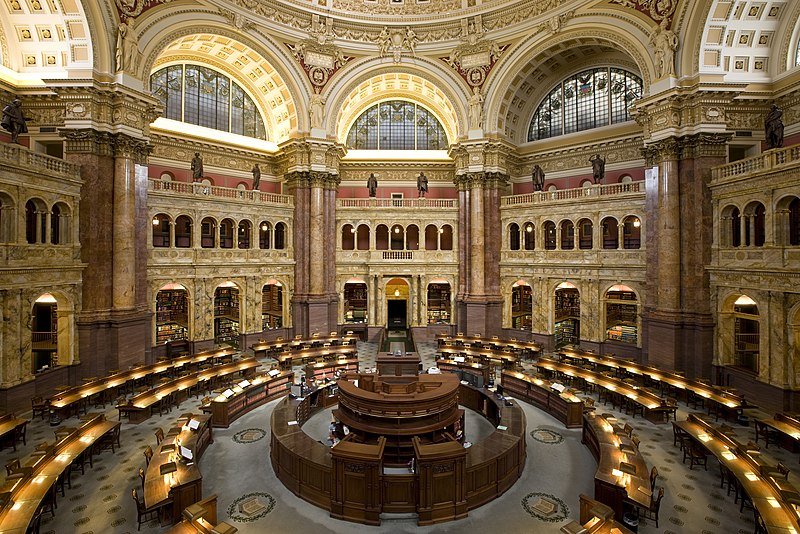
Photo: Library of Congress today - wikipedia 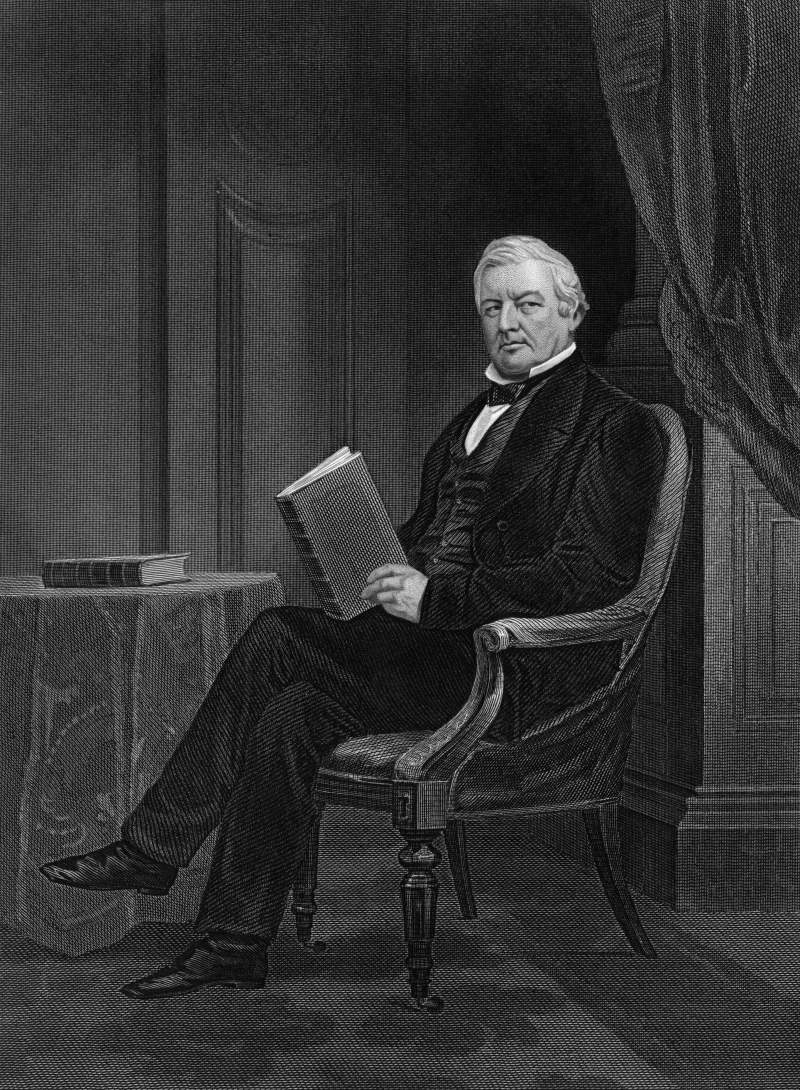
Photo: thoughtco -
Whether or not to seek for a full term as president, Fillmore remained unsure as the 1852 election drew near. Despite being over 70 and having a longstanding desire for the presidency, Secretary Webster planned one last push for the White House. While Fillmore expressed sympathy with the goals of his longtime friend in a letter announcing why he did not pursue a full term in office in late 1851, he was hesitant to do so out of concern that the party would be taken over by the Sewardites. As a result, Fillmore, Webster, and General Scott were the three main contenders heading into the national convention in Baltimore, which was scheduled to take place in June 1852.
The Fugitive Slave Act made Fillmore unpopular with northern Whigs, but the South continued to support him heavily because they believed he was the only candidate who could bring the party together. Southern delegates provided the majority of Fillmore's support at the Baltimore Whig convention in 1852, but on the 53rd ballot, multiple-war veteran Winfield Scott defeated him. Scott defeated Democrat Franklin Pierce in that November's election, winning just four of the 31 states up for grabs. This marked the beginning of the collapse for the Whig Party.
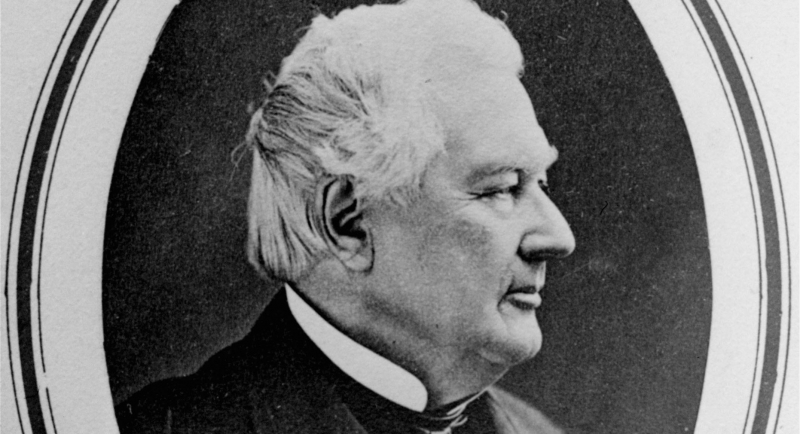
Photo: politico 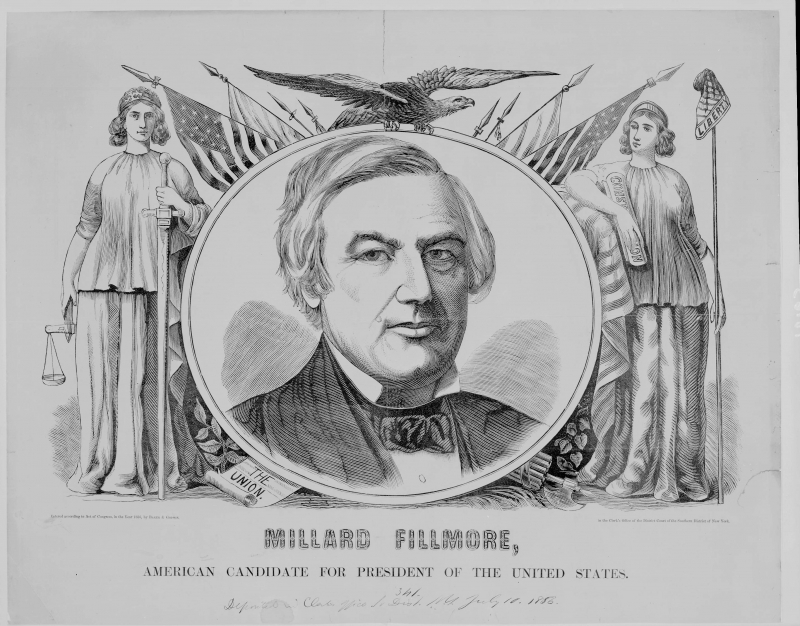
Photo: timpanogos


























